Featured This Month
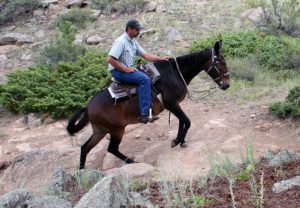
MULE CROSSING: On the Trail with Mules
By Meredith Hodges With the hectic schedule of spring and summer slowly tapering into fall, thoughts of cool, refreshing mountain streams, the sight of a massive bull elk, or the quiet majesty of the rugged mountain peaks on a relaxing trail ride, mountain hunt or pack trip begin to ease their way into our minds. What better time to share with your mule or donkey? What better place for him to show you what he was born to do? A mountain trail ride or pack trip are both perfect ways for you to get to really know your Longears and strengthen the bond between you. Mules are remarkably strong and durable animals, making them excellent mountain partners. The cupped shape of their hooves allows them to track the rough mountain terrain with much more surefootedness than their counterpart, the horse. A mule’s superior intelligence and strong sense of survival help him to carefully negotiate the placement of his feet, insuring the safest ride possible. This is both important and comforting to know when heading for the mountains. The mule’s strength and endurance are sometimes unbelievable, but always dependable. On a hunting trip, he will take you through rough mountain terrain ...
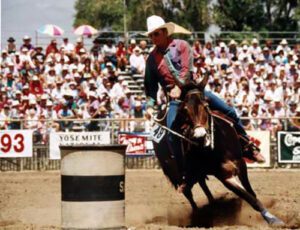
MULE CROSSING: Surge of Mule Shows
By Meredith Hodges I remember back in 1982 when summer came and we had to search high and low for shows in which we could compete with our mules! As they say, "You've come a long way, baby!" Mule shows are now so numerous that it is becoming very difficult to decide which ones to attend. Years ago, our mules were not necessarily welcome at horse competitions, and today that has changed as well – making our decisions about where to compete is even more complicated. It is truly amazing to see the tremendous growth in popularity of the mule over the past 30 to 40 years, but then I guess it was inevitable given all their redeeming qualities! It really isn't that unusual that people would begin to prefer mules once they received accurate and truthful information about them. Granted, you have to be smarter than the mule in order to train one, but once you train one properly, you have a wonderful companion and a top competitor in the equine world. More and more, the criticism of mules has changed to general curiosity and a willingness to learn more about these unique animals. Many people have taken a ...
All Articles
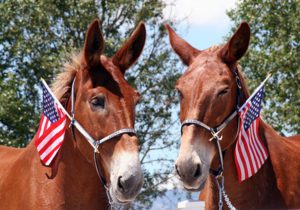
MULE CROSSING: In Appreciation of Mules
By Meredith Hodges We have all heard the numerous negative myths about mules that abound, but have you ever thought of a mule as a hero, as an extraordinary member of our society? The mule’s history can be traced back to Biblical times, and in those days, he was known as the preferred mount of royalty. Given his ancestry, this should not be surprising. After all, is he not the offspring of the chosen mount that Jesus Christ rode into Jerusalem? As Jesus was the Son of God, so is the mule the son of the chosen donkey. And he has much to teach us about ourselves and our world—if we could only learn to observe and listen carefully to what he is telling us. The mule can be a catalyst for health, happiness and prosperity, but we must learn to do our part in appreciation of him. Although he is often confused with his sire, the donkey, the mule is the symbol of neither the Republicans nor the Democrats. During past political campaigns, certain Republicans actually declined to have their picture taken with a mule, because they were either ignorant of the difference between a mule and a donkey, or they were afraid that the mule would be mistaken for the Democratic Party’s symbol—the donkey. As author Melvin Bradley notes, “Democrats in mule states have always been friendly to mule-loving voters. With a farm population of 25 percent of the total, votes from mule people could make a difference.”1As presidential candidate Harry S. Truman discovered, this was politically beneficial information and he used it wisely. Finally, on May 31, 1995, Governor Mel Carnahan signed a bill designating the Missouri mule as the official state animal. When people are open and fortunate enough to be able to engage in intimate ...
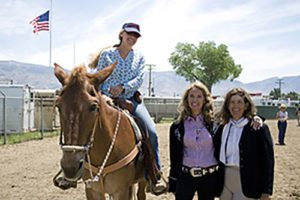
MULE CROSSING: In Celebration of Mule History
By Meredith Hodges George Washington imported the first jacks into the United States on October 26, 1785. The two jacks were a special gift to him from the King of Spain, although one died during the crossing. Royal Gift made it to become the sire of Washington’s mules at Mount Vernon. Two hundred years later, October 26th became Mule Appreciation Day as a result of mule’s increased popularity in modern times. George Washington was one of the very few in his time who recognized the value of breeding good mares to jacks for the best mules, at a time when most people were breeding mares that were unfit for horse production. The mule, being the hybrid cross between a male donkey called a jack, and a female horse called a mare, generally inherits the best characteristics from both parents. He is a stronger and more durable animal than the horse, requires less feed for good health, is more surefooted and is more resistant to parasites and disease than is the horse. He is smarter and less likely to injure himself than the horse, and if bred and trained properly, he possesses a disposition that is affectionate, humorous and more willing than that of the horse. In 1992, the American Donkey & Mule Society celebrated its 25th Anniversary in support of mules and donkeys. In 1967, inspired by "Platero," a gentle donkey and friend owned by the Hutchins family, the A.D.M.S. was founded by Paul and Betsy Hutchins and has grown into an appreciative organization of over 4000 members. They have encouraged people internationally to start their own clubs and organizations in support of Longears. As a result, the mule has enjoyed more different working and recreational uses now than ever before! Although his primary use has been and still is ...
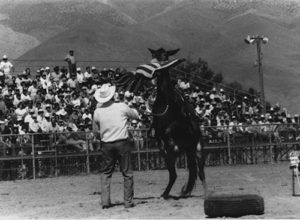
MULE CROSSING: Jack Copp and Joker
By Meredith Hodges Jack Copp was a very special man with a very special mule. Jack was born in Fairfax, Oklahoma, about 45 miles south of the Kansas border. His father worked with mules in the oil fields acquired from the Osage Indians by the U.S. Government years before. Although his father was familiar with mules, Jack was enamored with horses and particularly with team roping. Jack, a congenial and responsible man, worked at his job for 27 years and roped steers in his spare time. Then came the accident that changed his life. Jack was run over by a forklift that left him partially crippled for the rest of his life. He could no longer do the things he loved the most. In the midst of his depression, he met an old man who suggested that he get a couple of mules to mess with. "They'll git you on your feet," he said. Jack took the man's advice and bought Joker, a sorrel yearling mule colt, and his sister, Sissy, a weanling molly mule in November of 1978. By May of 1979, Jack had taught Joker enough tricks to entertain the audience at Bishop Mule Days in California. This was where I first saw them. In six short months Jack had Joker (only two years old) stretching, sitting, laying down, carrying his feed bucket, rolling a barrel with his front legs, and walking on his hind legs. What he had done with that handsome young mule was remarkable, but what Joker had done for Jack was even more amazing. Jack's life was given new meaning and his faith restored by this long-eared, little red mule. Sissy, Joker's sister, was sold and put into training with famed mule trainer Pat Parelli of California, while Jack and Joker became the very best ...
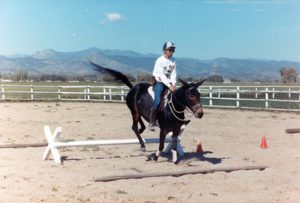
MULE CROSSING: Jumping Mules
By Meredith Hodges In 1986, when I first began using my mules in Dressage, you would never have convinced me that I would follow it up with jumping. I was fearful of jumping because of a few bad experiences I had with horses. However, once I took the time to learn to ride and train properly with Dressage and experienced the overall stability of a mule, my fear disappeared. Nowadays, when people find out that I jump my mules and my donkeys, the response is often, “I didn’t know mules could jump!” Not only can mules jump, they are quite good at it. However, if a mule, donkey or any other equine is to have the strength and coordination they need for jumping, their training must be approached in a specific, practical and healthy way. Then they can learn to maintain good rhythm in all gaits between jumps, to jump only as high as needed to clear fences, and to adjust their strides to and away from jumps. Proper jumping training takes time and patience because there is much more to jumping than just making it over the fences. If you speak to mule owners all over the world, you will hear at least one tale in ten about a mule jumping out of his pen. If they have the inclination, most mules have the ability to easily clear a fence up to and even over six feet high. The capability is certainly there, but in general, mules lack the motivation to expend the energy to actually jump out, especially when they are well managed. The muscle structure of a mule and donkeys is a bit different than that of a horse—somewhat like the difference between the muscle structure of a ballet dancer and that of a a weight lifter ...
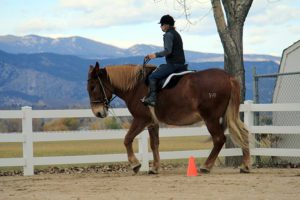
MULE CROSSING: Keys To Successful Training, Part 2: Your Working Environment
By Meredith Hodges The Work Station It is important that your equine feels safe and comfortable in his surroundings. For this reason, you should use the same place each day to groom and prepare him for his lessons. In the beginning, use a small pen (approximately 400 to 500 square feet) that allows you access to your equine for imprinting, tying, leading and grooming, as described in DVDs #1 and #8 of my series, Training Mules & Donkeys (plus disc #9 when dealing with donkeys), and in Part 1 of Equus Revisited. All the while, you will also be teaching him good ground manners. Remember, routine fosters confidence and trust. Once your equine has mastered tying and leading in the small pen, he can then move on to a designated work station where he will not only be groomed, but will also learn to accept tack in preparation for the round pen. This should be a place that has a good stout hitch rail and easy access to your tack and grooming equipment. When working around your equine at the work station, pay special attention to his body language. If he becomes tense or skittish, acknowledge his concerns with a stroke on his neck, supportive words to him and a reward of crimped oats when he settles down. Always learn to wait for him to settle down before you proceed. Don’t make too much out of unimportant details. For instance, if your equine is pawing the ground, don’t insist that he be still unless you need to approach him and do something specific with him. Many of your animal’s anxious behaviors get unintentionally rewarded by giving him too much attention, which can actually cause the behaviors to escalate. If you ignore pawing, cribbing, throwing of the head, pushing with the nose, stomping ...
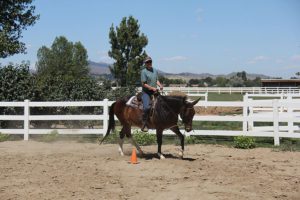
MULE CROSSING: Learning to Ride a Balanced Seat
By Meredith Hodges My philosophy is based on the principle that I am not, in fact, “training” donkeys and mules. Rather, I am cultivating relationships and establishing a lifestyle with them by assigning meaning to my body language that they can understand, while I learn what they are trying to indicate to me with their body language. In the same way that my own level of understanding changes and grows over time, I believe that my animals’ understanding grows, too. In the beginning, the emotional needs of a young mule or any equine are different from those of an older animal. The young animal needs to overcome many instincts that would protect him in the wild, but are inappropriate in a domestic situation. In a domestic situation, the focus must be on developing friendship and confidence in the young equine, while establishing my own dominance in a non-threatening manner. This is accomplished through the use of a great deal of positive reinforcement early on, including gentle touches, a reassuring voice and lots of rewards for good behavior. Expressions of disapproval should be kept to a minimum and the negative reinforcement for bad behavior should be clear, concise and limited. As your young equine grows and matures, he will realize that you do not wish to harm him. Next, he will develop a rather pushy attitude in an attempt to assert his own dominance (much like teenagers do with their parents), because he is now confident that this behavior is acceptable. When this occurs, reevaluate your reward system and save excessive praise for the new exercises as he learns them. Note, however, that a gentle push with his nose might only be a “request” for an additional reward and a polite “request” is quite acceptable in building a good relationship and ...
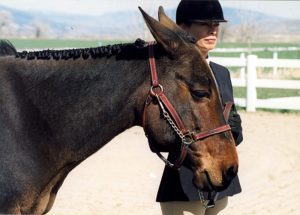
MULE CROSSING: Leverage Versus Abuse
By Meredith Hodges “Leverage” equipment refers to any restraining device or substance that is used to get an equine’s attention and obtain compliance, but many leverage practices often have the reverse effect and have the potential to cause distress and pain. This includes harsh bits, chain leads, twitches, hobbles, stocks and even medications. There are times when our equines can really be a handful, so having a little leverage when needed can be a good thing. However, deciding which equipment to use and learning how to use leverage without it becoming abusive can be a bit daunting. There are so many different types of tack, equipment and restraints that it becomes difficult to determine which would be best to use on your equine to correct a particular problem, or if you really need to use anything at all. It may only be a case of needing to be clearer in your approach, in which case, leverage equipment may not be needed. It is important to make an informed decision when using any leverage equipment to be sure that what you are using is helpful and not abusive. One very common behavioral problem that seems to identify the need for more leverage is the mule that bolts and runs when on the lead rope. This seems like an obvious disobedience to the handler, and the first thing that comes to mind is to use a lead shank with a chain to gain control of the mule. Normal use for a lead shank is during a Showmanship class at a show and it should rarely be used in training unless the equine will be shown at halter and/or showmanship. And then, training with the lead shank should be done only after the animal is following well through all required movements while in ...
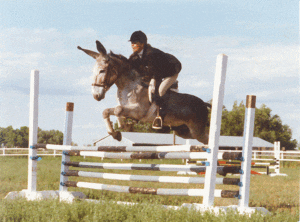
MULE CROSSING: Little Jack Horner
By Meredith Hodges Little Jack Horner , 13 HH Sire-Supreme of the Lucky Three Ranch in Loveland, Colorado, was the last jack born at the famed Windy Valley Ranch in Healdsburg, California owned by my mother, Joyce Doty. He was foaled June 11, 1980, by the renowned Windy Valley Adam (14.2 HH) and out of Windy Valley Maude (15 HH). His ancestry can be traced back to the original breeding stock of George Washington's farm at Mount Vernon, Virginia. In 1984 and 1985, Little Jack Horner captured second place in the Bishop Mule Days World Show Halter class for Standard Jacks. His impeccable show record consists of first and second place standings at Halter in his home state of Colorado, and in 1986, he placed first at Halter in the American Donkey and Mule Society Registered Jacks class at the A.D.M.S. Nationals in Dallas, Texas. In 1984, he made his debut in performance at the Colorado Classic Horse Show, placing first in Donkey Driving and Donkey Pleasure. His willing disposition held him in good stead, placing him first in Donkey Pleasure and Donkey Driving at Bishop Mule Days in 1989. Little Jack Horner (by his own enthusiastic request via running the fence) was trained in Dressage and Jumping along with his numerous offspring mules. He reached Second Level Dressage over three years and jumped four feet in exhibition at Bishop Mule Days in 1991 where he received a Specialty Award for his efforts. At Bishop Mule Days in 1993, he placed first in Donkey Pleasure, Donkey Pole Bending and Donkey Keyhole. Although Dressage proved difficult (as it would be for any donkey), it helped to set the stage for his incredible athletic ability to jump. He soared over fences to 4’6” without a rider and ...
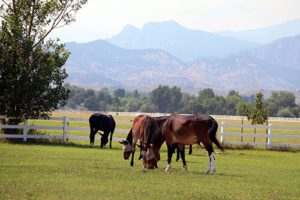
MULE CROSSING: Love Thy Neighbor: The Rural-Urban Conflict
By Meredith Hodges As the lines between suburbia and rural living continue to blur and subdivision dwellers encounter the sights, smells and sounds of farm and ranch life, lifestyles collide and questions arise about how to treat both sides fairly. There are no easy answers, but one important point to consider, as city and county councils all over the country debate these issues, is the great benefit equine centers in particular can provide for their communities. Anyone who’s fortunate enough to have exposure to equines knows that time spent with these animals is the best antidote to the stress of today’s world. For young and old alike, the therapeutic benefit of equines is undeniable. Working with horses, mules and donkeys promotes:
- Responsibility
- Consideration
- Consistency
- Compassion
- Cooperation
- Patience
- Trust
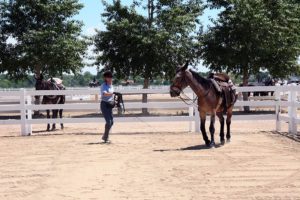
MULE CROSSING: LTR Training Principles and Philosophy
By Meredith Hodges No training series would be complete without examination of the principles and philosophy behind the training techniques. The philosophy of my training techniques is based on the principle that we are not, in fact, training our equines. In fact, we are cultivating relationships with them by assigning meaning to our own body language that they can understand. Since our own level of understanding changes and grows over time, we must assume that so does that of our animals, and we must gauge our explanations accordingly. In the beginning, the emotional needs of the young equine are quite different from that of an older animal. They need to overcome a lot of instincts that would protect them in the wild, but are inappropriate in a domestic situation. In this case, our focus must be on developing friendship and confidence in the young animal, while establishing our own dominance in a non-threatening manner. We do this through a lot of positive reinforcement in the beginning, with gentle touch, reassuring voice, and lots of rewards for good behavior. Our expressions of disapproval are kept at a minimum. As he grows with us, the equine will realize that we do not wish to harm him, and will next develop a rather pushy attitude in an attempt to assert his own dominance – once that he is confident that his behavior is acceptable. When this occurs, we must re-evaluate our reward system and save excessive praise for the new things as he learns them and allow the learned behavior to be treated as the norm, praised more passively, yet appreciated. This is the cultivation of a delicate concept of give and take in a relationship from the emotional standpoint. As in any good relationship, we must learn to be polite, considerate and ...
MULE CROSSING: Maintenance & Grooming
By Meredith Hodges Your equine depends upon you for his safety and well-being. The best feed in the world won’t keep him in good health if you neglect other important areas such as vaccinations and worming. It’s up to you to create a program to prevent disease and control parasites. Here are some suggestions for a general health program: 1) Cleanliness is very important. Make sure feed boxes are clean and manure is removed from stalls and paddocks. Do not feed hay or grain on the floor or anywhere it may become contaminated with manure. Similarly, small, heavily used pastures tend to build up a heavy parasite load. Pastures should be rotated and harrowed as frequently as possible to break the life cycle of the parasites. 2) Internal parasites are the most common danger to the health and well-being of your mule, and you must be prepared to wage a constant battle to control these worms. Follow your vet’s advice to set up a parasite-prevention and control program through regular worming. The drugs that are available today are very effective in removing parasites and breaking the cycle of re-infection. At Lucky Three Ranch, we worm every eight weeks in January, March, May, July and September with Ivermectin and then break the cycle and worm with Strongid in November. Don’t forget to watch out for bot eggs and remove them immediately. 3) Avoid letting your equine drink from public watering facilities. Use your own clean water buckets. Keep an eye out for anything that might injure your equine, and remove or repair it. Proper treatment of diseases and injuries depends on two very important factors: correct diagnosis and knowledge of the proper treatment. Your job is to become familiar with equine diseases and their symptoms. In case of sickness or injury, ...
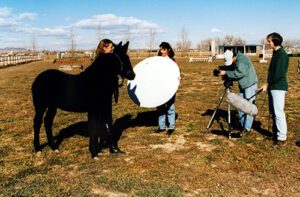
MULE CROSSING: Mule & Donkey Movies & TV Shows
By Meredith Hodges
- Does the Lucky Three Ranch participate in filming? Since my parents gave me a Brownie camera when I was five years old, I have been fascinated with taking pictures. They also gave me a diary after I learned to write. When I got older and began my interaction and training with mules in 1973, I always documented those interactions with my mules and donkeys in pursuit of learning the best way to manage and train them. I wanted to give them the best opportunity to exceed people’s expectations of them and dispel the old rumors. I kept diaries, wrote articles for international equestrian magazines from 1982 to present day, took photographs and video of every lesson, clinic and show to document their progress. I consolidated a group of articles in 1993 and published my first hardbound book, TRAINING MULES AND DONKEYS: A LOGICAL APPROACH TO LONGEARS.
- I worked with three different production companies from 1997-2017 producing my 10-tape video series (first in VHS and later upgraded to DVDs). By 2009, I had published two more hardbound books, A GUIDE TO RAISING & SHOWING MULES and DONKEY TRAINING, and another manual, EQUUS REVISITED with a matching DVD.
- From 2005-2007, I published five hardbound children’s books for a series for kids followed with corresponding DVDs and a coloring book. At the same time we did a lot of video short pieces such as TEACH YOUR MULES AMAZING THINGS and began the TRAINING TIPS series (67 TIPS).
- By 2017, I decided that the production companies were not doing justice to my brand considering their exorbitant costs. So, Lucky Three Productions, L.L.C. was born when my crew decided that we could probably do everything they were doing and could probably do it better...and we DID! We do EVERYTHING with two ...
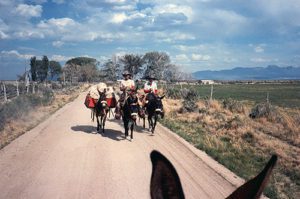
MULE CROSSING: Mule Fever, Part 1
By Meredith Hodges During the last 50 years, thousands of people in this country have become afflicted with a rather unique condition. The symptoms include childlike behavior coupled with loyalty, integrity, honesty, maturity, humility and moments of overwhelming humor. Those who have this condition are among the happiest people in the world, for they are fortunate enough to experience “Mule Fever.” “Mule Fever” begins when you gaze into the soft brown eyes of a big beautiful mule and he cocks an ear in your direction. Timidly, you request a ride, the mule complies, and the fever begins. A couple of miles down the road, a pheasant runs out of the brush and under your mule’s nose causing him to shy and unseat you. You lie in the road pained by your bruises, cussing the mule when he suddenly returns, nuzzles your face and gazes back at you with a perplexed and concerned look. Those soft brown eyes burn through to your soul, warm your heart and invite you to get up and try again. Once astride your mule again, you’d swear he is being extra-careful to avoid further mishaps. He seems sorry enough, so you forgive and forget and the bond between you strengthens and deepens. This is called “Mule Fever” and once it is contracted, one rarely recovers. Mules will remain in your heart and soul until the day you die! The best place to witness this phenomenon is at Bishop Mule Days in Bishop, California over Memorial Day weekend each year. Thousands of mule enthusiasts gather together with their mules and donkeys to exchange stories, ideas, and even mules. The current economic troubles of the country are quickly dispelled with solutions such as: “Out of fuel, ride a mule!” and “Out of gas, ride an ass!” “And ...
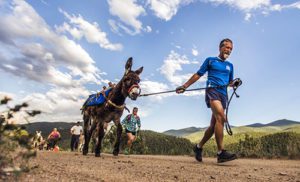
MULE CROSSING: Mule Fever, Part 2
By Meredith Hodges With the hectic work schedule of spring and summer slowly tapering into fall, thoughts of relaxing mountain hunting and pack trips begin to ease their way into your mind: thoughts of cool, refreshing mountain streams, the sight of a massive bull elk, or the quiet majesty of the rugged mountain peaks. What better time to share with your mule or donkey? What better place for him to show you just what he is capable of doing? A relaxing mountain trail ride or pack trip is the perfect place for you to get to know your longears and strengthen the bond between you. Mules are excellent mountain partners. They are a strong and durable animal. Due to the cupped shape of their hooves, they can cover the rough mountain terrain with much more surefootedness than their cousin, the horse. Mules’ superior intelligence and strong sense of survival helps him to negotiate careful placements of his feet, ensuring the safest possible ride. This is both important and comforting when looking for a relaxing ride in the mountains. The mule’s strength and endurance is sometimes unbelievable, and always incredible. He will take you through the rough mountain terrain for days, and then pack out that “elk of your dreams” with the greatest of ease. Around the campfire, he is a wonderful companion on lonesome mountain nights. His blatant curiosity can make for the most humorous of situations and his loving way can win your heart. But more than that, he can be relied upon when the going gets tough. In the fall of 1984, Loveland, Colorado muleskinner Buddie Stockwell and farrier, Jerry Banks, along with a few friends, decided to make a hunting trip into the Rocky Mountains. Packing in, the weather was beautiful with warm temperatures, calm breeze and ...
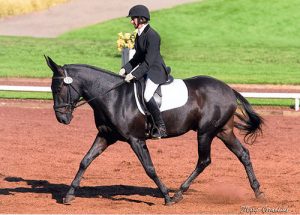
MULE CROSSING: Mules Accepted by U.S.E.F. in Dressage!
By Meredith Hodges It’s 2004 and “You’ve come a long way, Baby!” The movement to have mules accepted by major equine organizations began with the United States Dressage Federation in 1986, 17 years ago! There was still the hurdle of being accepted by the most prestigious equine organization in the country at the time, the American Horse Show Association that sanctioned all upper level shows and competitions. Since then, the mules’ participation in significant horse events was a long, uphill climb and membership in the A.H.S.A. was only a dream. Even though they were accepted at the schooling level back then, there were still many areas that were unwilling to comply with the United States Dressage Federation’s acceptance at this level and mules continued to be discriminated against in many shows and competitions. However, our undaunted mule riders persisted in their quest for perfection and showed the mule as a competent Dressage and Combined Training candidate. Bishop Mule Days rewarded their efforts and added Dressage classes at Bishop for these dedicated people and their mules. As more riders began using Dressage as a basis for training, and A.H.S.A. judges were being used for the classes at Bishop, even more professional equestrians began to see the competence of our beloved mules and our riders’ dedication to excellence. The same kinds of things were happening in the disciplines of Competitive Trail Riding, Endurance, and Driving. The first discipline of the United States Equestrian Federation (formerly the American Horse Show Association) to accept mules was in Endurance Riding, and was then followed by their acceptance in Driving through the valiant efforts of Dave Ketscher and his mules, Mariah Carey and Jeremiah. Dressage rider, Carole Sweet, began her quest for acceptance in the U.S.E.F. Dressage Division several years ago and has single-handedly become the ...
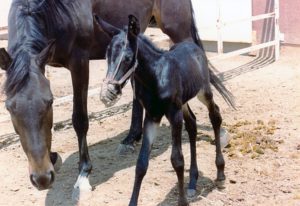
MULE CROSSING: Neonatal Isoerythrolysis
By Meredith Hodges “Neonatal isoerythrolysis (N.I.) is a condition in which the mare creates antibodies against the foal’s red blood cells, and then passes these antibodies to the foal via the colostrum. Once the foal absorbs these antibodies, they result in lysis* of the foal’s red blood cells within 24 to 36 hours after birth. This red blood cell destruction is widespread throughout the foal’s body and can lead to life-threatening anemia and/or jaundice. (This is similar to the human Rhesus, or Rh, factor, where a woman who is Rh-negative gives birth to her second or subsequent child that is Rh-positive, resulting in destruction of the newborn’s red blood cells.)”1 All legitimate mule breeders should be aware of this condition, especially because it can occur more often when breeding donkey jacks to mares than it does when breeding stallions to mares within the same species. If the hybrid foal’s blood type is the same as its mother’s, then there is no problem. However, when the jack and the mare have different blood types, and the foal possesses the jack’s blood type, there is potential for N.I. to occur. On the surface of the mare’s red cells are antigens that will stimulate the production of antibodies against incompatible red blood cells (R.B.C.s). There are basically two ways that these R.B.C.s can get into her system: 1) If the foal’s R.B.C.s enter the mare’s circulation via the placenta during pregnancy or during delivery. 2) If the mare obtains these incompatible cells during a blood transfusion. If neither of these conditions occurs, the mare can carry, birth and nurse her foal with no problem. However, if the incompatible red cells do somehow get into her system, she will begin making antibodies against those cells that, in turn, will be passed into the ...

MULE CROSSING: On the Trail with Mules
By Meredith Hodges With the hectic schedule of spring and summer slowly tapering into fall, thoughts of cool, refreshing mountain streams, the sight of a massive bull elk, or the quiet majesty of the rugged mountain peaks on a relaxing trail ride, mountain hunt or pack trip begin to ease their way into our minds. What better time to share with your mule or donkey? What better place for him to show you what he was born to do? A mountain trail ride or pack trip are both perfect ways for you to get to really know your Longears and strengthen the bond between you. Mules are remarkably strong and durable animals, making them excellent mountain partners. The cupped shape of their hooves allows them to track the rough mountain terrain with much more surefootedness than their counterpart, the horse. A mule’s superior intelligence and strong sense of survival help him to carefully negotiate the placement of his feet, insuring the safest ride possible. This is both important and comforting to know when heading for the mountains. The mule’s strength and endurance are sometimes unbelievable, but always dependable. On a hunting trip, he will take you through rough mountain terrain for days then pack out the “elk of your dreams” with the greatest of ease. Around the campfire, he is wonderful company on those lonesome mountain nights. His blatant curiosity can make for some fun—and funny— situations, and his loving ways will win your heart. But first and foremost, he is a reliable companion when the going gets tough. A few years ago, some close muleskinner friends of mine decided to take a hunting trip into the Rocky Mountains. Packing in, the weather was beautiful with warm temperatures, calm breezes, and not a cloud in the sky. After setting up ...
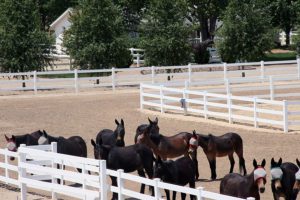
MULE CROSSING: Owning an Equine Is Serious Business, Part 1
By Meredith Hodges While many of us were growing up, we were barraged with a deluge of ideas and attitudes about equines that were conveyed to us via multiple forms of media and educational sources. The role models of yesteryear were movies like, My Friend Flicka, books like The Black Stallion or Black Beauty, and TV shows like The Lone Ranger and Hopalong Cassidy. The most commonly known mules were “Francis,” who appeared in the Francis the Talking Mule series, and another mule known as “Ruth,” who appeared in the TV show, Gunsmoke. Those of us who tried to apply the management and training practices portrayed in the movies and books discovered that the things we saw on television and read in books covered only a fraction of what was really necessary, and the things that were shown and written about didn’t always work the same way in reality as they did in fiction. Like many equine lovers, I was convinced that, when I got older, I would be able to have as many horses of my own as I wanted. I thought I would build a one hundred-stall barn and rescue all the abused horses in the country that I could. Surely, one hundred stalls could house almost all of them! Even into my early twenties, I believed this could happen. I honestly thought that all I needed was a patch of fenced grass and a shed out of the weather, and this simple solution would sufficiently provide for an equine. I was soon to discover the responsibility of health and finance that would burst my fantasy bubble and force me to deal with the hard realities of a life with equines. Once you confront these realities, you begin to really understand what is meant by “horse poor!” But ...
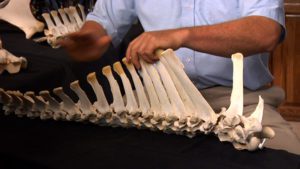
MULE CROSSING: Owning an Equine Is Serious Business, Part 3
By Meredith Hodges As discussed in Parts 1 and 2 of this article, there are many more things to think about before purchasing an equine than you could have ever imagined—from the actual purchase of the equine to the management considerations you need to be aware of on a daily basis. It is so important to always keep in mind that an equine is not an inanimate object like a car that you can tune up, drive (or, in this case, ride) at will, and then put back in the garage until the next time. In fact, the equine was not anatomically designed to be ridden at all. The idea of riding was a completely human decision. In order to more clearly understand this concept, let’s take a closer look at the equine anatomy. The equine is designed with interlocking vertebra in the spine that have long bony “fingers” called spinus processes,which protrude in varying lengths from the interlocking vertebra. The spinus processes“fingers” support the musculature that surrounds the super spinus ligament, which runs the full length of the back. The highest point of the spinus processes is at the withers, where the spinus processes bones are at their longest. They then taper down toward the croup, becoming shorter as they line up across the back. This is a body design that was intended to carry the weight below the spine and not on top of it. Everything in the equine’s mind and body supports this position and, when we train, if we do not pay attention to re-programming the muscles, tendons and ligaments to support the additional weight above the spine in a way that is painless and clearly understood by the equine, they become uncomfortable and even sore, and bad behaviors are almost certain to arise. If you ...
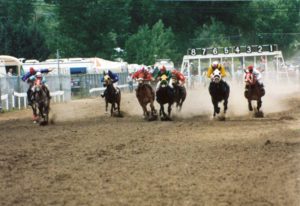
MULE CROSSING: Racing Mules
By Meredith Hodges Racing, the Sport of Kings has intrigued people for hundreds of years. Perhaps it’s the beauty of running horses, or maybe the way your heart swells with excitement as they come down the home stretch, or it could just be the money. But whatever the reason, millions flock to the racetracks each year to enjoy this magnificent sport. Over the years, racing has expanded to include not only the Thoroughbreds and Standardbreds, but Appaloosas, Arabians, and Quarter Horses as well. During the past three decades, mules have emerged onto the racetrack to take their place in making racing history. Although mule racing has just begun to take hold as a national sport, it had its beginnings in the Eastern Sierra Nevada Mountains of California in 1851, when Captain Boling’s cavalry troop was forced to halt for two months in the Yosemite Valley. Horse racing was one of the major sports used to keep up the spirits of the men during this unexpected respite. Army mules were included in these races to add to the entertainment. Much to the chagrin of some of the horse owners, the mules could actually beat some of the cavalry’s favorite mounts. Captain Boling purchased one Maltese, Kentucky-blooded mule (known as The Vining Mule). He was particularly impressed and bought him for one thousand dollars in gold from Lee Vining. He then went on to make many more thousands in match races with this mule against horses. To quote from the official racing program: “The Indian war of 1851 was the catalyst that started the first running of mules in California.” The first actual pari-mutuel mule meet was held in Bishop, California in July of 1978. Exacting conditions demanded discreet organization and one of the first necessities was a condition rulebook, which was ...
